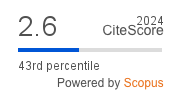Evaluating the Performance of Deep Convolutional Neural Networks and Support Vector Regression for Creditworthiness Prediction in the Financial Sector
DOI:
https://doi.org/10.4114/intartif.vol28iss76pp66-84Keywords:
Deep Convolutional Neural Network, Support Vector Regression, Synthetic Minority Oversampling Technique, Imbalanced dataset, Machine Learning, Creditworthiness Prediction.Abstract
Creditworthiness prediction plays a crucial role in the financial sector, where accurate assessments of individuals’ credit risk are essential for making informed lending decisions. In recent years, the use of advanced machine learning algorithms, such as Deep Convolutional Neural Networks (DCNNs) and Support Vector Regression (SVR), has gained traction for creditworthiness prediction tasks. These algorithms offer unique capabilities for analyzing complex financial data and extracting valuable insights to effectively assess credit risk. This study develops and compares credit risk prediction models using DCNNs and SVR, leveraging two real-world financial datasets: the Bank Churners Dataset (10,127 records, 23 features) from Kaggle and a Personal Loan Dataset (5,000 records, 14 features) with a significant class imbalance. The datasets include variables such as income, credit limit, transaction history, and loan acceptance, which are critical for assessing financial behavior. Given the imbalance in both datasets (e.g., only 16.1% of customers churned in the Bank Churners Dataset and 10% accepted loans in the Personal Loan Dataset), we apply the Synthetic Minority Over-sampling Technique (SMOTE) to balance the classes and improve model performance. Evaluation metrics, including accuracy, precision, recall, and F1-score, demonstrate that SVR outperforms DCNN across key parameters, achieving an accuracy of 0.92, F1-score of 0.95,
precision of 0.93, and recall of 0.97 on Dataset 1. In comparison, DCNN achieved an accuracy of 0.88, F1-score of 0.89, precision of 0.86, and recall of 0.91. On Dataset 2, while DCNN’s accuracy improved to 0.93, SVR excelled with 0.98. These findings underscore the superiority of SVR in scenarios demanding high accuracy and precision, while DCNN offers a more balanced trade-off between precision and recall. This study provides actionable insights into selecting optimal models for credit risk evaluation, contributing to the development of reliable, data-driven financial systems.
Downloads
Metrics
Downloads
Published
How to Cite
Issue
Section
License
Copyright (c) 2025 Iberamia & The Authors

This work is licensed under a Creative Commons Attribution-NonCommercial 4.0 International License.
Open Access publishing.
Lic. under Creative Commons CC-BY-NC
Inteligencia Artificial (Ed. IBERAMIA)
ISSN: 1988-3064 (on line).
(C) IBERAMIA & The Authors









